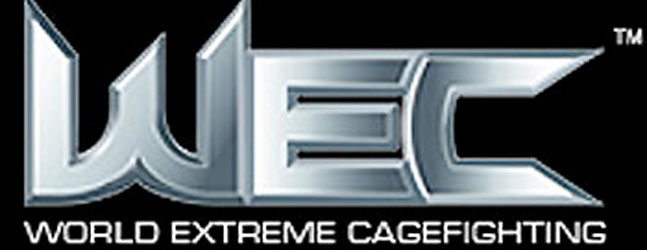
As more and more information about the forthcoming World Extreme Cagefighting pay-per-view begins to trickle out, there is one constant: MMA fans, by and large, seem unwilling to pay to watch WEC fighters.
Don’t get me wrong; I’ll be buying the WEC pay-per-view. Sure, I have DirecTV, so maybe I’m more willing to shell out to see WEC 48 than someone with traditional cable. Even so, the thought of paying money to see champion Jose Aldo v. Urijah Faber, WEC Lightweight Champion Ben Henderson v. Donald Cerrone, and Mike Brown v. Manny Gamburyan seems reasonable to me. Aside from adding Miguel Torres challenging for the Bantamweight title, I’m not sure if there’s any way to put together a better WEC card.
WEC is a victim of its own success. WEC 48 is a stacked show by WEC standards, and given the company’s sterling track record, that’s saying a lot. These are the same sort of matches that make the aforementioned hardcore fans salivate and make people like me bitch and moan because, of all channels, I no longer have Versus (thanks DirecTV). Despite that, WEC events provide such a consistently high level of entertainment, regardless of whatever name is on the marquee, for free. It will be tough to sell their fights now, even with the cream of the crop fighting on the same event.
This circumstance reaffirms the hierarchy of drawing a paying combat sports audience. There’s some room to quibble about the order, but the basic hierarchy of drawing a paying audience to a combat sporting event is as follows. First, fans want stars. The larger the better, both literally and figuratively. Second, fans want grudge matches. The more personal the blood feud, the more money the fans will fork over. Third, fans want title matches. A fight can absolutely be great without a title on the line, but add a title to the mix and both the fighters and the audience watching them are validated; they become a part of history. In distant fourth are competitive, non-title matches with the potential for excitement.
With that hierarchy in mind, it’s not difficult to see why fans aren’t clamoring to shell out $44.95 to watch this event. WEC is putting their biggest star, Urijah Faber, in a title match with newly crowned Featherweight champion and destroyer of the world, Jose Aldo. In theory, this will the biggest match in company history. In reality, though Faber is a big star (if only figuratively), he’s also something of a big fish in a small pond.
There are other contributing factors as well. Zuffa, WEC’s parent company, is already planning 10 pay-per-view events through August under the UFC banner. The WEC pay-per-view in particular will be flanked by UFC pay-per-views on April 10 and May 8. Then there’s the potential for Strikeforce’s next event on CBS to be aired head-to-head with the WEC pay-per-view. Add to that the Floyd Mayweather versus Shane Moseley boxing match on May 1 and shroud the entire scenario under the current economic climate, and WEC winds up out in the cold trying to sell ice cream.
There is a silver lining to the cloud. Since his first fight with Jens Pulver, an average of 927,000 viewers have tuned in to watch WEC events featuring Urijah Faber. The fewest number of viewers for any of his fights since then, 497,000, came in his first loss to Mike Brown. In his only featured bout for WEC, also against Mike Brown, Jose Aldo drew a television audience of 414,000. Others will extrapolate a buy rate, but what I take away from those numbers is that, if nothing else, over 400k people have consistently watched the duo of Aldo and Faber fight at an extremely high level. A star of Faber’s magnitude in a competitive title match that is all but guaranteed to be exciting is just about the best case scenario for a main event.
I’ll set the over/under for the WEC 48 buy rate at 86,000. That’s the same number of buys for the first UFC pay-per-view and about 1,000 more buys than the first Affliction pay-per-view. Although their television product doesn’t have the reach enjoyed by the UFC, the fact that WEC has broadcasted live fights on Versus for nearly three years should be sufficient to draw more people to purchase their event.
According to Dave Meltzer on the February 3 podcast for WrestlingObserver.com, Zuffa’s internal over/under for WEC 48 is 50,000, with 60,000 being considered the buy rate at which a second WEC pay-per-view would be guaranteed. To think that a Zuffa promoted fight in 2010 would draw fewer buys than the original UFC pay-per-view says a lot about the decision to put a WEC event on pay-per-view. Then again, this may be an example of Zuffa curtailing expectations in order to justify a second WEC pay-per-view when expectations are exceeded. One problem in that scenario is that if Urijah Faber loses to Jose Aldo, he won’t be able to support further pay-per-view events in the way he will support WEC 48. Perhaps Aldo will become the company’s next star. Perhaps Miguel Torres will reclaim the WEC Bantamweight title and in the process catapult to Faber level of popularity. Perhaps one of the company’s other fighters will rise up and claim to the superstar role.
Then again, perhaps I’m hoping for too much.
Comments
The Case for WEC on Pay Per View